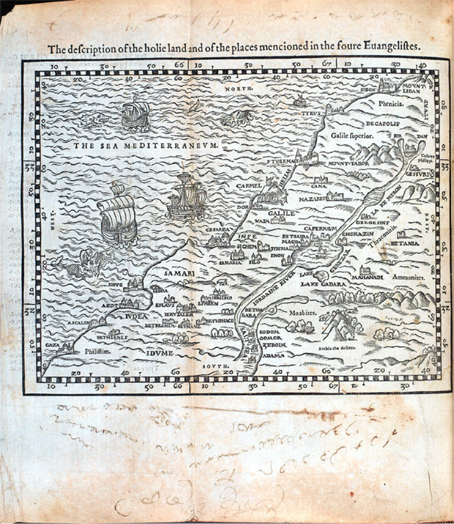
Marginal Maps
Samuel Tongue merges book history, marginalia studies, reader usage, cartography, and cultural geography to theorize the inclusion of maps as an example of biblical marginalia in 16th-century printed Bibles. By examining a specific example of a user adding their own marginal map, Tongue focuses on religious, historical and economic forces that undergird their authority, arguing that, for a certain user, these maps produce an imagined ‘Palestine,’ framing the land as...